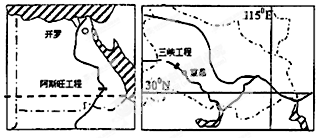If you leave a loaded weapon lying around,
问题:
If you leave a loaded weapon lying around, it is bound to go off sooner or later. Snow-covered northern Europe heard the gunshot loud and clear when Russia cut supplies to Ukraine this week as part of a row about money and power, the two eternal battlegrounds of global energy. From central Europe right across to France on the Atlantic seaboard, gas supplies fell by more than one-third. For years Europeans had been telling themselves that a cold-war enemy which had supplied them without fail could still be depended on now it was an ally ( of sorts). Suddenly, nobody was quite so sure.
Fearing the threat to its reputation as a supplier, Russia rapidly restored the gas and settled its differences with Ukraine. But it was an uncomfortable glimpse of the dangers for a continent that imports roughly half its gas and that Gérard Mestrallet, boss of Suez, a French water and power company, expects to be importing 80% of its gas by 2030--much of it from Russia. It was scarcely more welcome for America, which condemned Russia’s tactics. And no wonder: it consumes one-quarter of the world’s oil, but produces only 3% of the stuff. Over the coming years, the world’s dependence on oil looks likely to concentrate on the Middle East, particularly Saudi Arabia. Russian oil had seemed a useful alternative.
Fear of the energy weapon has a long history. When producers had the upper hand in the oil embargo of 1973-74, Arab members of the Organisation of the Petroleum Exporting Countries (OPEC) cut supply, sowing turmoil and a global recession. When consumers had the upper hand in the early 1990s, the embargo cut the other way. After Saddam Hussein invaded Kuwait in 1990, the world shut in 5m barrels a day (b/d) of production from the two countries in an attempt to force him out. With oil costing $ 60 a barrel, five times more than the nominal price in 1999, and spot prices for natural gas in some European and American markets at or near record levels, power has swung back to the producers for the first time since the early 1980s. Nobody knows how long today’s tight markets will last. "It took us a long time to get there and it will take us a long time to get back," says Robin West, chairman of PFC Energy in Washington. A clutch of alarmist books with titles such as "The Death of Oil" predict that so little oil is left in the ground that producers will always have pricing power. The question is how worried consumers should be. What are the threats to energy security and what should the world do about them The answers suggest a need for planning and a certain amount of grim realism, but not for outright panic.
Which of the following can be inferred from the text()
A. Worry of the energy weapon is of a long history in the snow-covered northern Europe
B. The dispute with Ukraine was resolved without any delay and gas supply was restored
C. The risks for a gas-importing continent were exposed in the recent Russian-Ukrainian incident
D. Russian gas had long appeared to be a beneficial alternative
